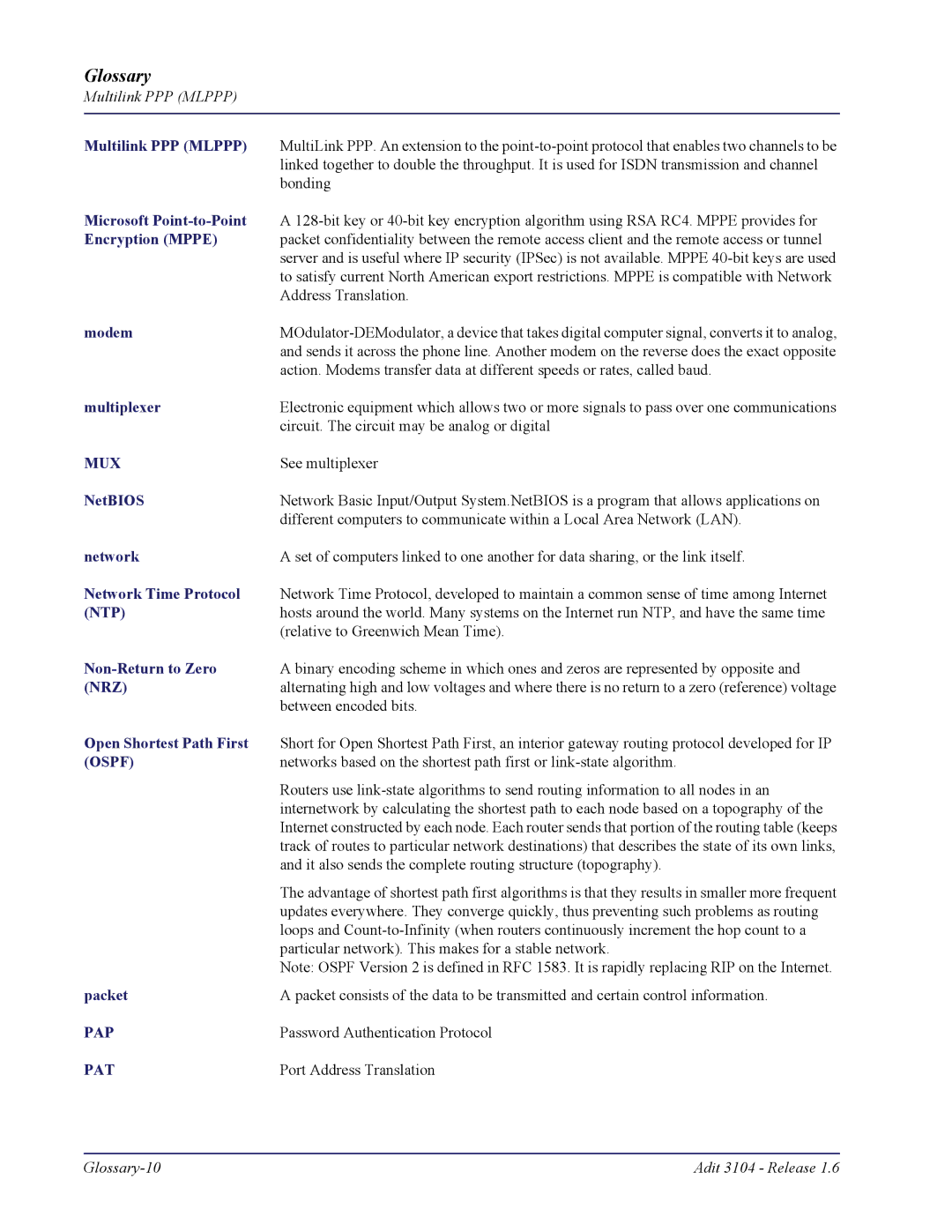
Glossary
Multilink PPP (MLPPP)
Multilink PPP (MLPPP) | MultiLink PPP. An extension to the |
| linked together to double the throughput. It is used for ISDN transmission and channel |
| bonding |
Microsoft | A |
Encryption (MPPE) | packet confidentiality between the remote access client and the remote access or tunnel |
| server and is useful where IP security (IPSec) is not available. MPPE |
| to satisfy current North American export restrictions. MPPE is compatible with Network |
| Address Translation. |
modem | |
| and sends it across the phone line. Another modem on the reverse does the exact opposite |
| action. Modems transfer data at different speeds or rates, called baud. |
multiplexer | Electronic equipment which allows two or more signals to pass over one communications |
| circuit. The circuit may be analog or digital |
MUX | See multiplexer |
NetBIOS | Network Basic Input/Output System.NetBIOS is a program that allows applications on |
| different computers to communicate within a Local Area Network (LAN). |
network | A set of computers linked to one another for data sharing, or the link itself. |
Network Time Protocol | Network Time Protocol, developed to maintain a common sense of time among Internet |
(NTP) | hosts around the world. Many systems on the Internet run NTP, and have the same time |
| (relative to Greenwich Mean Time). |
A binary encoding scheme in which ones and zeros are represented by opposite and | |
(NRZ) | alternating high and low voltages and where there is no return to a zero (reference) voltage |
| between encoded bits. |
Open Shortest Path First | Short for Open Shortest Path First, an interior gateway routing protocol developed for IP |
(OSPF) | networks based on the shortest path first or |
| Routers use |
| internetwork by calculating the shortest path to each node based on a topography of the |
| Internet constructed by each node. Each router sends that portion of the routing table (keeps |
| track of routes to particular network destinations) that describes the state of its own links, |
| and it also sends the complete routing structure (topography). |
| The advantage of shortest path first algorithms is that they results in smaller more frequent |
| updates everywhere. They converge quickly, thus preventing such problems as routing |
| loops and |
| particular network). This makes for a stable network. |
| Note: OSPF Version 2 is defined in RFC 1583. It is rapidly replacing RIP on the Internet. |
packet | A packet consists of the data to be transmitted and certain control information. |
PAP | Password Authentication Protocol |
PAT | Port Address Translation |
Adit 3104 - Release 1.6 |
